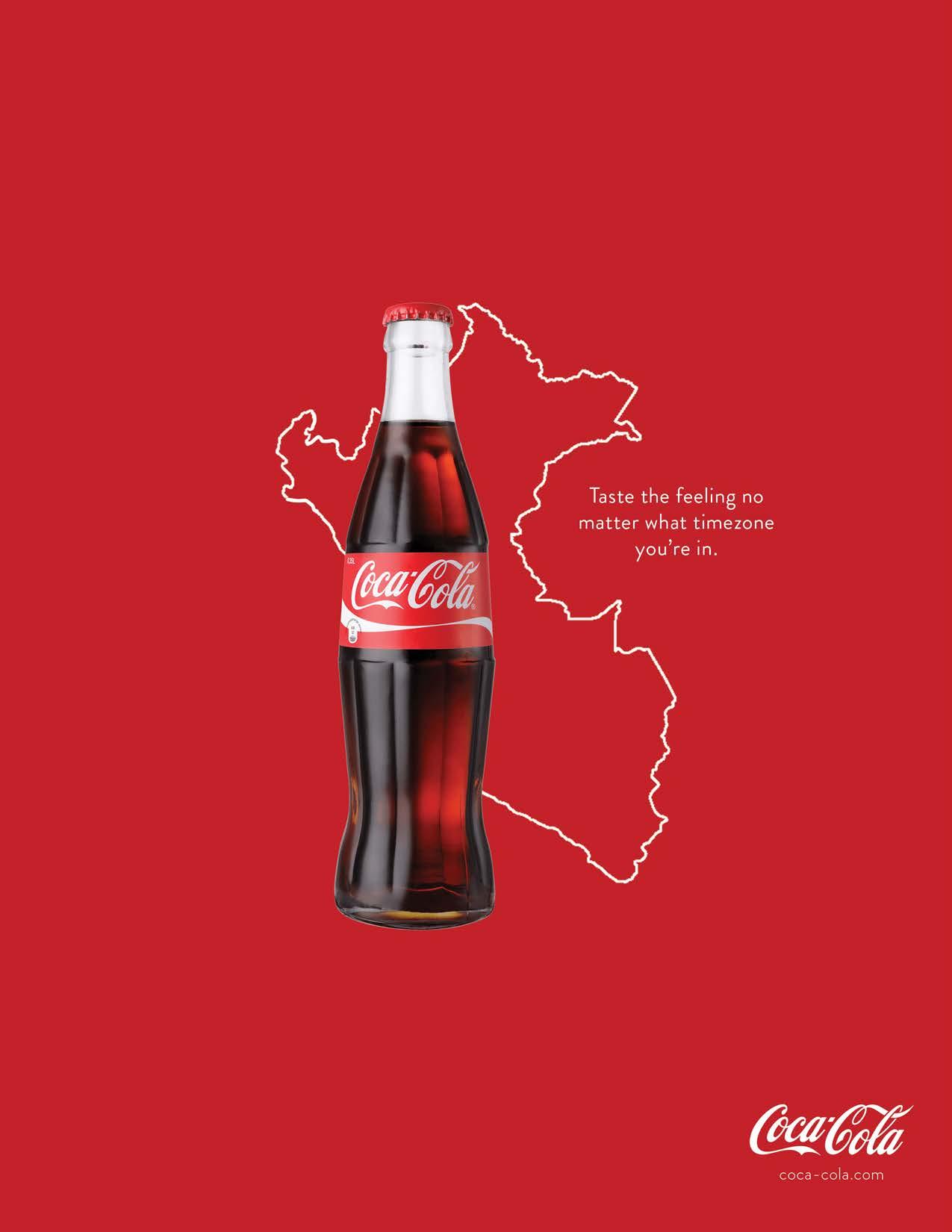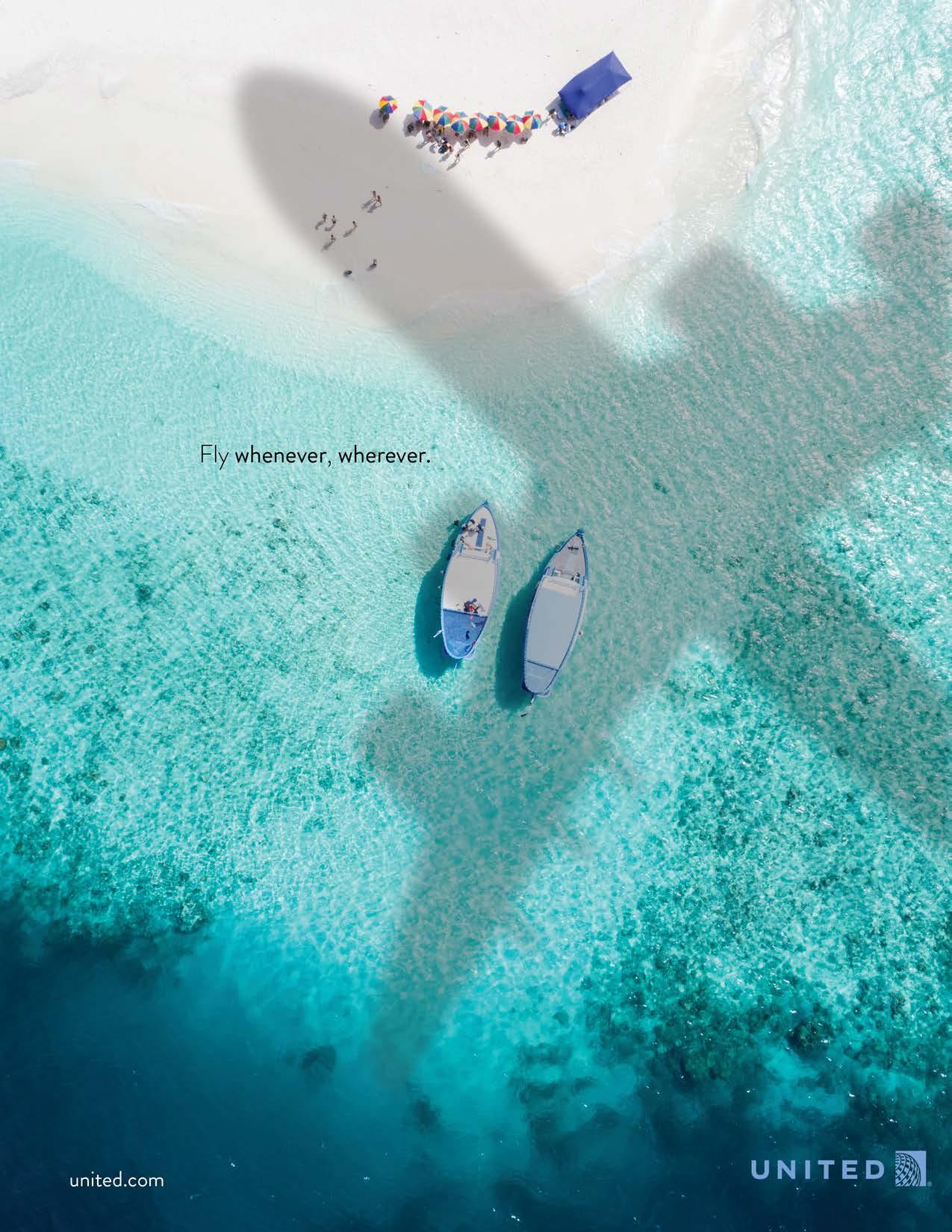






As you delve into the pages of this magazine, I invite you to immerse yourself in the wonders of Peru. Whether you are planning your own adventure or simply seeking inspiration from afar, may this journey ignite your curiosity and ignite a newfound appreciation for this extraordinary country.

Discover the ancient wonder of Machu Picchu, nestled high in the Andes Mountains of Peru. Embark on an unforgettable journey through history as you explore the mystical ruins of the Inca Empire, surrounded by breathtaking natural beauty.

Immerse yourself in the vibrant heartbeat of Lima, the capital of Peru. Experience a captivating blend of colonial charm, modern vitality, and rich cultural heritage as you explore its bustling streets and savor its culinary delights.
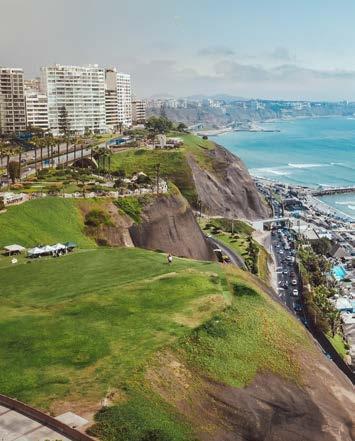
Savor the vibrant flavors of Peruvian cuisine, a tantalizing fusion of indigenous ingredients and multicultural influences. From savory ceviche bursting with freshness to rich and aromatic dishes like lomo saltado, Peruvian food promises a culinary adventure like no other.

Witness Harumi Momota seamlessly blend elements of Japanese and Peruvian culture to create garments that celebrate the rich textile heritage of Peru.

Experience the soul-stirring beauty of Peruvian art, where ancient traditions meet contemporary expression. From intricate textiles woven with centuries-old techniques to bold and colorful paintings depicting the country’s rich history, Peruvian art offers a glimpse into a world of creativity and cultural richness.


In this edition of our magazine, we embark on a captivating journey to the enchanting land of Peru. Nestled in the heart of South America, Peru beckons with its rich tapestry of history, culture, and natural wonders.
Peru is a country that tantalizes the senses and captures the imagination. From the majestic peaks of the Andes to the lush depths of the Amazon rainforest, its landscapes are as diverse as they are breathtaking. But it is perhaps the ancient ruins of Machu Picchu that serve as the crown jewel, a testament to the ingenuity and architectural prowess of the Inca
civilization. Yet, beyond its awe-inspiring scenery, Peru’s true magic lies in its people and their vibrant traditions. From the bustling streets of Lima to the remote villages of the Sacred Valley, you’ll encounter a warmth and hospitality that is uniquely Peruvian. Here, ancient customs intertwine with modern life, creating a cultural mosaic that is both captivating and deeply enriching.
No exploration of Peru would be complete without indulging in its culinary delights. Peruvian cuisine is a celebration of flavor, with influences ranging from indigenous ingredients to Spanish, African, and Asian culinary traditions.
From the zesty tang of ceviche to the hearty comfort of aji de gallina, each dish tells a story of Peru’s diverse heritage.
As you delve into the pages of this magazine, I invite you to immerse yourself in the wonders of Peru. Whether you are planning your own adventure or simply seeking inspiration from afar, may this journey ignite your curiosity and ignite a newfound appreciation for this extraordinary country.
Editor, Spotlight Paradise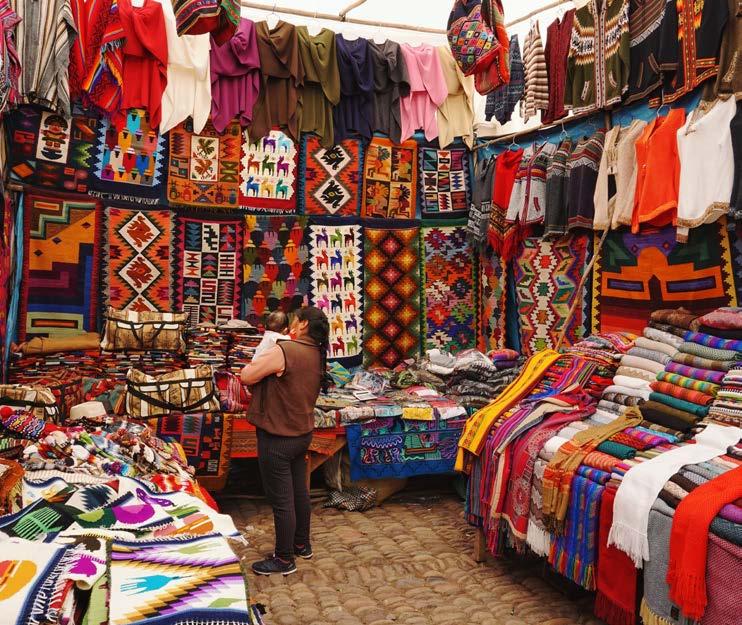
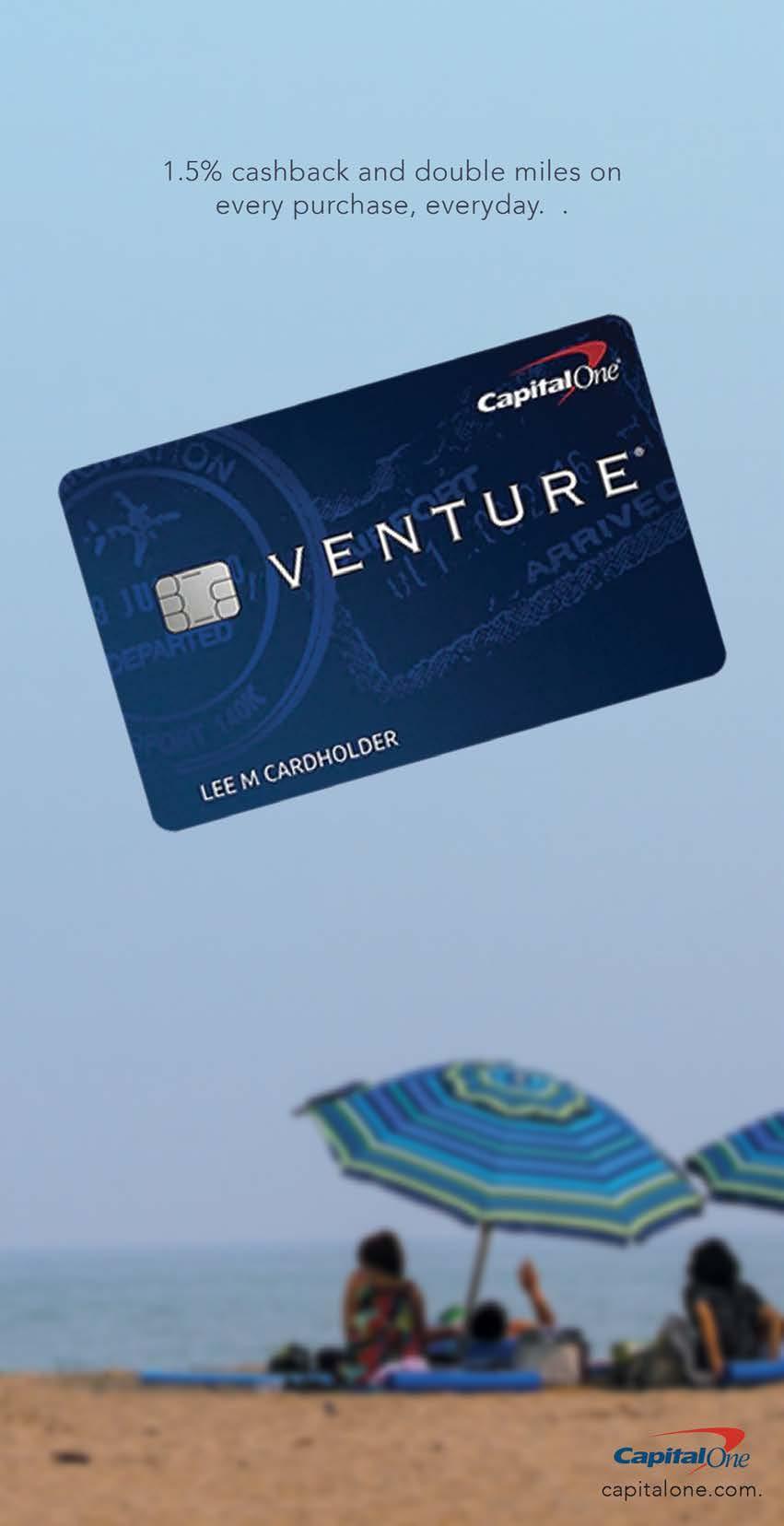
Take a journey to Peru with this issue. Find out the best routes to explore at Machu Picchu, sample the finiest food and sweets, experience Peruvian traditional art firsthand, and more. EDITORIAL
Baxter Lin Design Director
Larry Durham Graphic Designer
Morgan Patel VP of Advertisement
Lincoln Marquez Advertising Assistant
Nestled along the Pacific coast, with its sprawling cityscape stretching to the horizon, lies the vibrant metropolis of Lima, the capital of Peru. This bustling city, often dubbed the “City of Kings,” serves as a captivating gateway to the rich tapestry of Peruvian culture.
Lima’s charm lies in its ability to seamlessly blend the old with the new. Wander through the historic downtown, a UNESCO World Heritage Site, and you’ll find yourself transported back in time. Colonial-era architecture, with its ornate facades and grand plazas, stands as a testament to the city’s storied past as the seat of Spanish colonial power in South America.
But beyond the cobblestone streets and colonial mansions, Lima pulsates with the energy of modernity. Miraflores and Barranco, two of the city’s trendiest neighborhoods, buzz with life day and night. Here, sleek skyscrapers mingle with bohemian art galleries, and stylish cafes spill onto bustling boulevards. It’s a city where tradition and innovation dance in harmony, offering visitors a glimpse into Peru’s dynamic spirit.
Lima is a melting pot of cultures, reflected in its diverse population and vibrant arts scene. Museums such as the Larco Museum and the Museum of Contemporary Art showcase the country’s
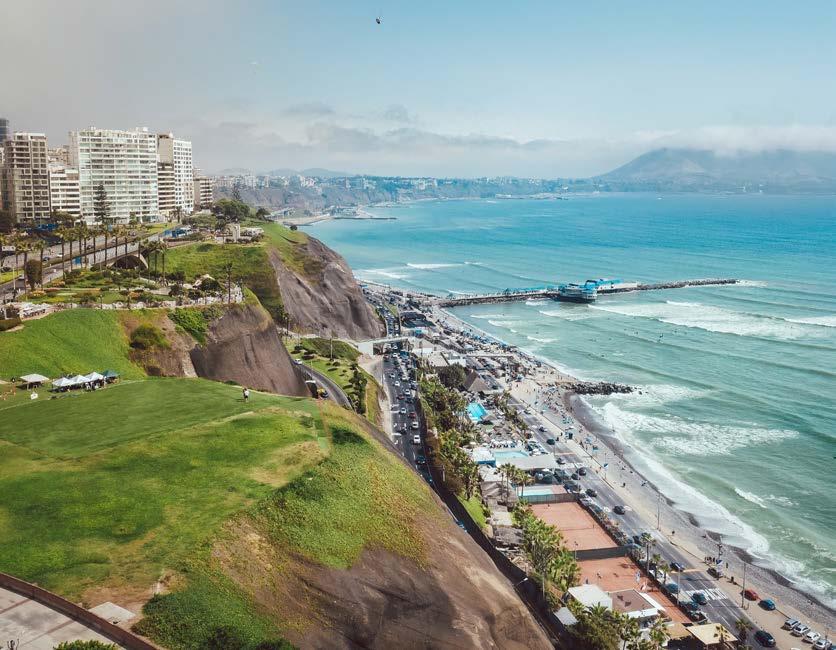
of Contemporary Art showcase the country’s rich heritage and artistic prowess, while theaters and concert halls host performances that range from traditional folk music to avant-garde theater.
Artisan markets, such as the colorful Mercado de Surquillo, offer a glimpse into everyday life, where locals haggle over fresh produce and handcrafted goods. Meanwhile, street art adorns the city’s walls, providing a canvas for social commentary and creative expression.
Nestled along the rugged Pacific coastline, Lima, Peru, offers beachgoers a unique and vibrant coastal experience unlike any other. While the city may be renowned for its rich history and bustling urban scene, its beaches serve as a refreshing escape, where locals and visitors alike come to soak up the sun, surf the waves, and revel in the laid-back beach culture that defines Lima’s coastal lifestyle. For surf enthusiasts, Lima’s beaches offer an exhilarating playground of waves waiting to be conquered.
From the world-class breaks of Punta Hermosa and La Herradura to the beginnerfriendly swells of Makaha and Waikiki, there’s something for surfers of all skill levels. Whether you’re paddling out at dawn to catch the morning swell or riding the waves until sunset, Lima’s beaches promise endless opportunities for adrenaline-fueled adventures on the water.
But Lima’s beach experience extends far beyond surfing. Along the city’s coastline, you’ll find a tapestry of seaside neighborhoods, each with its own unique charm and character. Miraflores, with its scenic Malecón boardwalk and bustling Larcomar shopping center, offers a perfect blend of urban sophistication and coastal relaxation. Barranco, Lima’s bohemian enclave, beckons with its colorful streets, vibrant art scene, and eclectic mix of cafes and bars.
No beach day in Lima is complete without indulging in the city’s legendary culinary offerings. Peruvian ceviche, a refreshing dish of marinated seafood, is a beachside staple, best enjoyed with a cold beer and panoramic views of the ocean. From casual beachfront chiringuitos serving up grilled seafood to upscale restaurants specializing in innovative coastal cuisine, Lima’s culinary scene celebrates the abundance of fresh ingredients sourced from the nearby waters.
Lima’s shopping scene offers a captivating blend of tradition, innovation, and cultural diversity. From bustling markets brimming with handmade crafts to upscale boutiques showcasing cutting-edge fashion, Lima invites visitors to embark on a retail journey like no other. At the heart of Lima’s shopping experience are its lively markets, where centuries-old traditions meet the hustle and bustle of everyday life. The Mercado Central, located in the historic downtown area, is a sensory delight, with
vendors selling everything from fresh produce and exotic spices to handmade textiles and traditional crafts. Meanwhile, the sprawling Mercado de Surquillo offers a glimpse into local life, with stalls overflowing with colorful fruits, fragrant flowers, and mouthwatering street food.
For those seeking unique and handcrafted souvenirs, Lima’s artisanal markets are a treasure trove of one-of-akind finds. The Barranco Artisan Market, nestled within the bohemian district of Barranco, showcases the work of local artisans , from intricately woven textiles and hand-painted ceramics to vibrant jewelry and intricately carved woodwork. Meanwhile, the Indigenous Market in
“There are plenty of sights here that are breathtaking and so many things to experience. Plenty of places to try new foods you’ve never had and the beaches of Lima are something you don’t want to miss!”
Miraflores offers a curated selection of indigenous crafts from across Peru, providing visitors with an opportunity to support local communities and learn about traditional craftsmanship.
Lima is also home to a burgeoning fashion scene, with designers blending traditional Peruvian motifs with contemporary aesthetics to create stunning pieces that are both stylish and culturally rich. In the upscale district of San Isidro, fashionistas will find a plethora of boutiques showcasing the latest trends in Peruvian fashion, from luxurious alpaca sweaters and intricately embroidered garments to sleek leather accessories and statement jewelry.
Meanwhile, the Larcomar shopping center in Miraflores boasts an array of
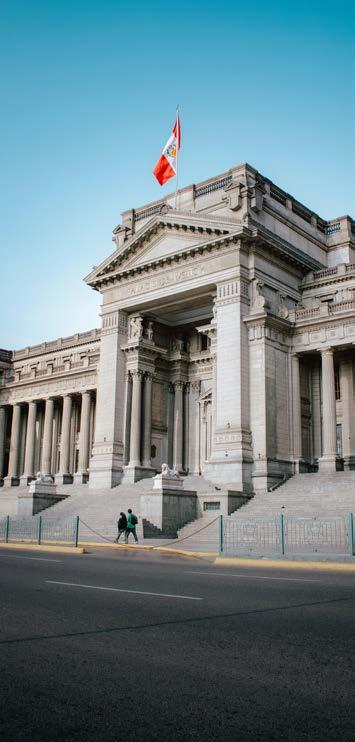
international brands alongside local designers, offering shoppers a mix of highend fashion and casual chic.
What sets Lima’s shopping scene apart is its celebration of diversity and cultural heritage. Whether you’re exploring the bustling markets of downtown Lima or perusing the chic boutiques of Miraflores, you’ll find a rich tapestry of traditions, flavors, and styles woven into the fabric of the city’s retail landscape. Lima invites visitors to embrace the spirit of exploration, to wander its streets with an open mind and a sense of curiosity, and to discover the hidden gems and unexpected treasures that await around every corner. So come, immerse yourself in the vibrant world of Lima’s shops, and let the city’s retail adventure unfold before you.
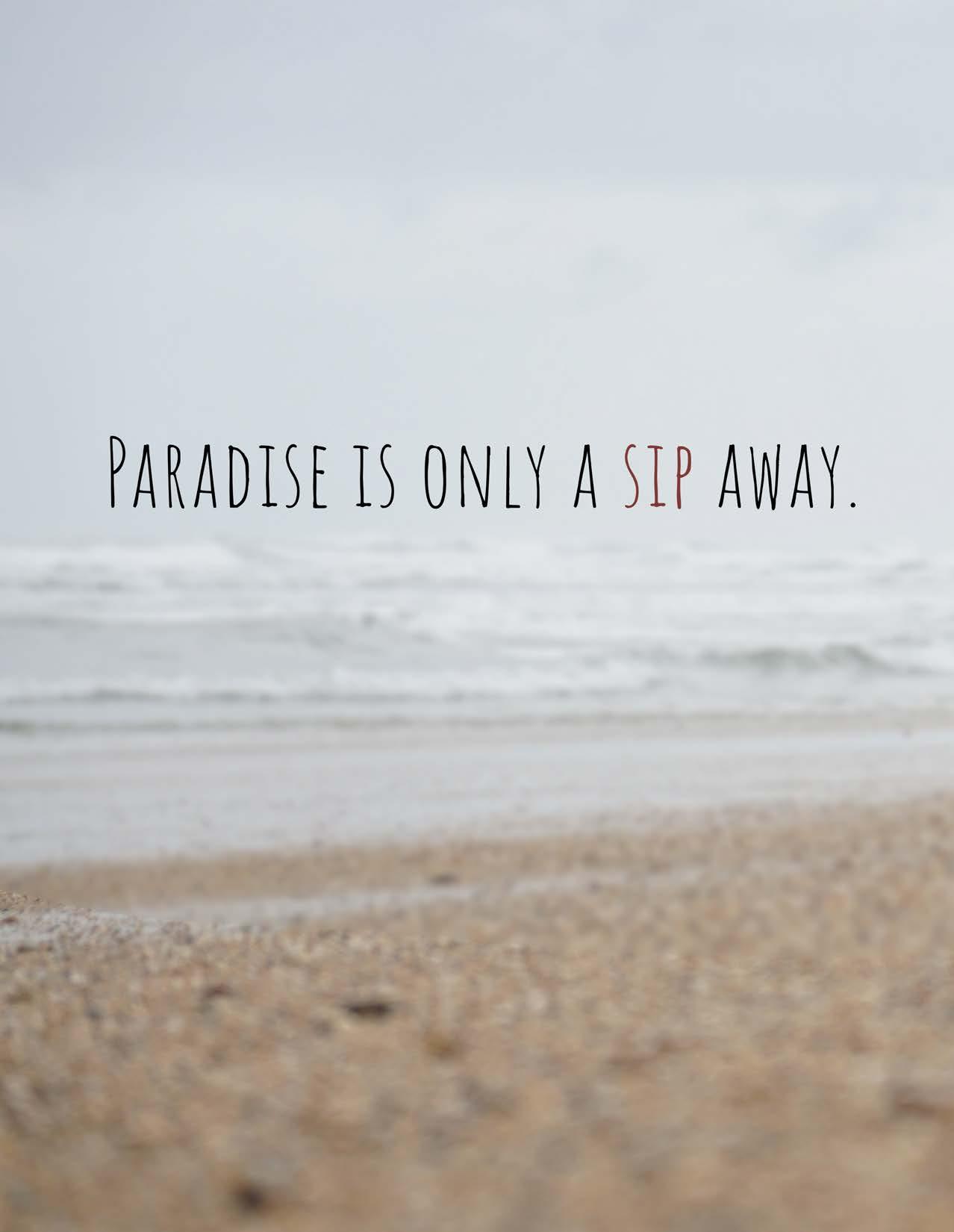

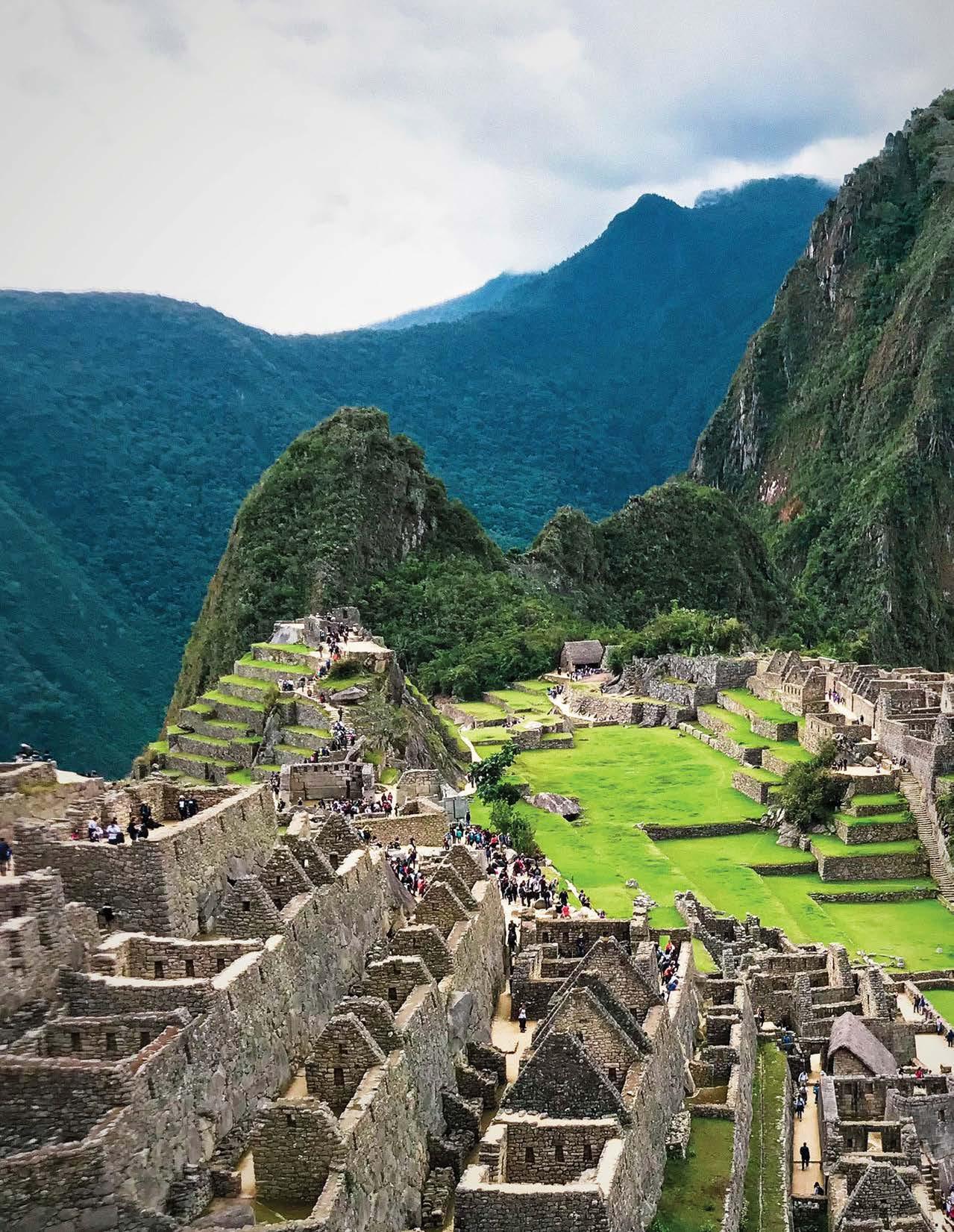
High atop the mist-shrouded peaks of the Andes Mountains, nestled amidst the lush greenery of Peru’s Sacred Valley, lies one of the world’s most iconic archaeological wonders: Machu Picchu. This ancient Inca citadel, shrouded in mystery and steeped in history, has captured the imaginations of travelers and scholars alike for centuries, drawing visitors from across the globe to marvel at its awe-inspiring beauty and unravel the secrets of its past.
Machu Picchu, often referred to as the “Lost City of the Incas,” stands as a testament to the ingenuity and architectural prowess of the Inca civilization. Built in the 15th century at the height of the Inca Empire, this extraordinary site served as a royal estate and spiritual retreat for Inca rulers, with its terraced fields, ceremonial plazas, and intricately constructed stone structures providing a glimpse

into the advanced engineering and cultural sophistication of its creators. Despite centuries of study and exploration, many aspects of Machu Picchu remain shrouded in mystery. Archaeologists continue to debate the purpose of the site, with theories ranging from a royal estate and agricultural center to a ceremonial site and astronomical observatory. The precise method of construction, using precisely cut stones that fit together without mortar, remains a marvel of engineering prowess, while the significance of the site’s location, perched on a steep mountain ridge overlooking the Urubamba River, continues to intrigue researchers.
Trekking to Machu Picchu is a pilgrimage revered by adventurers and history buffs alike. While there are various routes to reach this

fabled destination, the classic Inca Trail stands out as the ultimate path for those seeking an authentic experience. The trail winds through breathtaking mountain scenery, lush cloud forests, and a series of awe-inspiring archaeological sites, culminating in the grand reveal of Machu Picchu at sunrise.
At the heart of Machu Picchu lies a testament to the ingenuity of the Incan civilization. As you traverse the stone pathways and terraced hillsides, you’re transported back
in time to an era of unparalleled architectural brilliance and spiritual reverence. Explore the enigmatic ruins of temples, palaces, and agricultural terraces, each revealing clues to the ancient mysteries that shroud Machu Picchu in intrigue.
Beyond its archaeological significance, Machu Picchu is a sanctuary of biodiversity, teeming with exotic flora and fauna. Along the trekking routes, encounter a vibrant tapestry of orchids, bromeliads, and hummingbirds, as well as different elusive species.
Every step taken amidst this natural paradise is a reminder of the connectedness of all living things.
Machu Picchu is not only a marvel of ancient engineering but also a melting pot of cultures, languages, and friendships waiting to be discovered. While the breathtaking landscape and ruins draw visitors from around the globe, it’s the shared experience of exploration and discovery that often forges lasting connections among travelers.

The universal language of awe and wonder breaks down barriers as travelers from diverse backgrounds come together to marvel at the enigmatic beauty of Machu Picchu. A simple smile, a shared moment of wonder, or a spontaneous exchange of stories can be the catalyst for forging connections that transcend language and cultural differences.
As the day unfolds, shared experiences create a tapestry of memories that bind strangers together. Whether it’s navigating the labyrinthine paths of the ruins,


swapping tales of adventure over a picnic lunch, or witnessing the breathtaking sunrise over the citadel, each moment shared at Machu Picchu becomes a thread in the fabric of newfound friendships.
Despite its relatively small size, Machu Picchu is home to an astonishing variety of plant and animal species, thanks to its diverse range of habitats, including cloud forests, high-altitude grasslands, and Andean scrubland. This
biodiversity hotspot supports a thriving ecosystem, with species adapted to the unique conditions of the Andean environment. The cloud forests surrounding Machu Picchu are teeming with life, boasting an impressive array of plant species adapted to the cool, moist conditions found at higher elevations. Towering trees draped in mosses and epiphytes create a verdant canopy, while vibrant orchids, bromeliads, and ferns carpet the forest floor. These lush forests provide habitat for a variety of wildlife, including
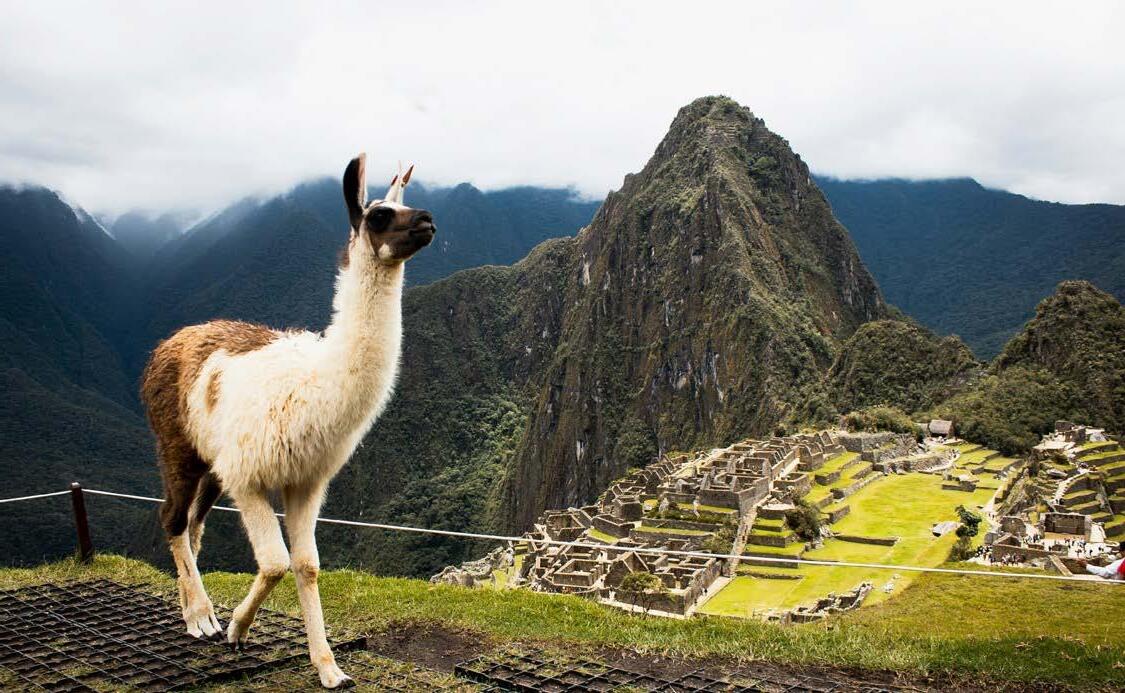
birds, mammals, and amphibians. Machu Picchu is a paradise for birdwatchers, with over 400 species of birds recorded in the region. From the iconic Andean condor soaring overhead to the colorful flashes of hummingbirds darting among the flowers, birdwatchers are treated to a dazzling display of avian diversity. Other notable species include the Andean cock-of-the-rock, the Inca wren, and the Andean toucan.
“Booking your own adventure with an experienced guide is easy and affordable. This is an experience you don’t want to miss.”
While the dense forests and rugged terrain of Machu Picchu make it challenging to spot larger mammals, visitors may encounter smaller species such as the spectacled bear, the only bear species native to South America. Other mammal species found in the region include the Andean fox, the mountain vizcacha, and the elusive puma, though sightings are rare due to their elusive nature.
Despite its status as a protected area, Machu Picchu faces numerous conservation challenges, including habitat loss, invasive species, and climate change. Efforts to preserve and protect the biodiversity of the region are ongoing, with initiatives aimed at restoring degraded habitats, controlling invasive species, and promoting sustainable and ecofriendly tourism practices.
Imagine strolling through the ancient ruins of Machu Picchu, when suddenly you encounter a friendly face with soft, expressive eyes – a llama! For many visitors to Machu Picchu, the desire to interact with these gentle creatures is irresistible. Now, thanks to a new service offering llama encounters, that dream can become a reality.
For centuries, llamas have been an integral part of Andean culture, serving as pack animals, sources of wool, and even companions to the indigenous peoples of the region. Today, these endearing creatures continue to captivate the hearts of visitors with their curious nature and gentle demeanor.
A local organization has launched a service that allows visitors to interact with these charming animals. Led by knowledgeable guides, visitors can join small groups for a hands-on experience with friendly llamas, learning about their history, behavior, and significance in Andean culture along the way.

Experience firsthand the amazing cuisines that Peru has to offerBy James Garcia
Peru, a land of breathtaking landscapes and ancient civilizations, is also a culinary paradise teeming with flavors, textures, and traditions that reflect its diverse cultural heritage. From the vibrant markets of Lima to the high-altitude farms of the Andes, Peruvian cuisine offers a tantalizing journey for the taste buds, blending indigenous ingredients with Spanish, African, Asian, and European influences to create a culinary tapestry unlike any other. No exploration of Peruvian food is complete without indulging in ceviche, the national dish that embodies the essence of coastal Peru. Fresh fish, typically marinated
in lime juice and mixed with onions, cilantro, and chili peppers, creates a burst of flavor that is both refreshing and invigorating. Served with sweet potato, corn, and cancha (toasted corn kernels), ceviche is a culinary masterpiece that celebrates the bounty of the Pacific Ocean. Peru’s vibrant culinary scene is also shaped by its multicultural heritage, with Japanese immigrants contributing their own unique flavors to the mix. Nikkei cuisine, born from the fusion of Japanese and Peruvian culinary traditions, is a testament to the creativity and adaptability of both cultures. Dishes like tiradito (thinly sliced fish similar to sashimi, but marinated in Peruvian-style sauces) and causa rellena (a layered potato dish



filled with seafood or vegetables) showcase the delicate balance of flavors and textures that define Nikkei cuisine.
In the high-altitude regions of the Andes, traditional Andean ingredients take center stage, reflecting centuries-old farming practices and indigenous culinary traditions. Quinoa, an ancient grain revered for its nutritional value, is a staple of Andean cuisine, served in soups, salads, and as a base for hearty stews. Potatoes, which originated in the Andes, are celebrated in countless varieties, each with its own unique flavor and texture. Other Andean delicacies include rocoto relleno (stuffed spicy peppers), cuy (guinea pig), and chicha morada (a sweet and tangy drink made from purple corn).

No visit to Peru would be complete without sampling the array of street food delights that line the bustling streets of cities like Lima and Cusco. Anticuchos, skewers of marinated beef heart grilled to perfection, are a beloved street food favorite that dates back to pre-Columbian times. Other popular street foods include empanadas (stuffed pastries), salchipapas (French fries topped with sliced hot dogs), and picarones (sweet potato and squash doughnuts served with syrup).
At the heart of Peruvian cuisine lies a deep connection to the land and its indigenous peoples. Ancient civilizations such as the Incas cultivated a rich agricultural heritage, developing sophisticated farming techniques that allowed them to thrive in diverse ecosystems. Staples like quinoa, potatoes, corn, and amaranth were not only dietary
staples but also sacred gifts from the earth, revered for their nutritional value and spiritual significance.
Peruvian cuisine is a testament to the country’s history of cultural exchange and migration. Over the centuries, Peru has been shaped by waves of immigration from Spain, Africa, China, Japan, and other parts of the world, each bringing its own culinary traditions and ingredients. The result is a fusion of flavors and techniques that is uniquely Peruvian, blending indigenous ingredients with Spanish, African, Asian, and European influences to create a cuisine that is as diverse as the country itself.
In Peru, food is more than just sustenance – it’s a cultural expression that brings people together and strengthens social bonds. From traditional Andean feasts to festive celebrations in the streets of Lima, food plays a
“Anywhere you go in Peru, you’ll find something new to try and love! Both Instagram worthy and a treat for your tastebuds.”
central role in Peruvian rituals and traditions. Whether it’s sharing a pachamanca (a traditional Andean barbecue) with family and friends or participating in a pisco sour toast during a national holiday, Peruvian cuisine fosters a sense of community and belonging.
Peruvian sweets have deep roots in the country’s pre-Columbian heritage, with indigenous ingredients and techniques shaping traditional desserts enjoyed for centuries. Chancaca, a sweet syrup made from raw cane sugar, is a staple of Andean cuisine and is used to sweeten many traditional desserts. Chicha morada, a refreshing drink made from purple corn and flavored with spices and fruits, has been enjoyed since Incan times and is a popular

accompaniment to meals.
The Spanish conquest brought new ingredients and culinary techniques to Peru, shaping the country’s dessert repertoire.
Alfajores, delicate sandwich cookies filled with dulce de leche and dusted with powdered sugar, are a beloved treat enjoyed throughout Peru. Turron, a nougat-like candy made with almonds, honey, and egg whites, is another Spanish import that has become a favorite during the holiday season.
Peru’s coastal regions offer their own sweet delights, influenced by

the abundance of tropical fruits. Suspiro de limeña, a creamy caramel custard topped with meringue, is a dessert that captures the essence of coastal sweetness. Turrón de doña Pepa, a colorful confection made from layers of anise-flavored cookies and honey syrup, is a traditional treat enjoyed during the month of October to celebrate the Lord of Miracles festival.
Peruvian sweets are more than just desserts – they’re a reflection of the country’s rich culinary heritage, blending indigenous ingredients with global influences to create a diverse and delicious array of treats. Whether you’re indulging in a traditional dessert passed down through generations or sampling a modern creation from a trendy pastry shop, every bite is a sweet reminder of the vibrant flavors and traditions that make Peru’s culinary scene so irresistible. So go ahead, treat yourself to a taste of Peru’s sweet delights and savor the sweetness of every moment.
Suspiro de LimeñaTake a look at the historic art of Peru being kept alive still playing a huge role even in modern times.
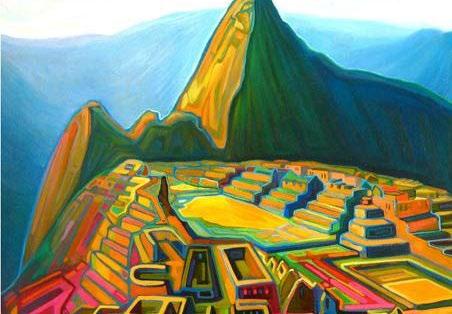 Painting of Machu Picchu
Painting of Machu Picchu


Peruvian art is a kaleidoscope of color, culture, and history, reflecting the country’s rich tapestry of indigenous traditions, colonial influences, and contemporary creativity. From ancient textiles and pottery to modern paintings and sculptures, Peruvian art offers a window into the soul of a nation shaped by centuries of cultural exchange and artistic expression. Join us as we embark on a journey through the vibrant world of Peruvian art, where each stroke of the brush and weave of the loom tells a story of creativity, resilience, and beauty. Peruvian art has deep roots in the ancient civilizations that once thrived in the Andean region, such as the Moche, Chimu, and Inca cultures. These civilizations left behind a rich legacy of artistic expression, from intricately woven textiles to finely crafted pottery adorned
with intricate designs and symbolic motifs. The vibrant colors and bold patterns found in pre-Columbian art continue to inspire contemporary Peruvian artists and serve as a reminder of the enduring creativity of indigenous cultures.
The arrival of Spanish conquistadors in the 16th century brought new artistic influences to Peru, as European styles merged with indigenous techniques to create a unique fusion of artistic expression. Baroque churches and cathedrals adorned with ornate altarpieces and gilded sculptures became centers of artistic patronage, showcasing the talent of indigenous and mestizo artisans. Religious paintings and sculptures depicting saints, angels, and biblical scenes became popular subjects,

blending Spanish iconography with indigenous symbolism.
One of the most iconic forms of Peruvian art is the traditional textiles woven by indigenous communities throughout the Andes. Using techniques passed down through generations, artisans create intricate designs that reflect the natural world, cosmology, and cultural heritage of their communities. Each textile is a work of art imbued with symbolic meaning, from the vibrant colors of the yarn to the geometric patterns that adorn the fabric. Today, Andean textiles are celebrated not only for their beauty but also for their role in preserving indigenous traditions and identity.
Peruvian art draws inspiration from the country’s stunning natural landscapes, where snow-capped mountains, lush rainforests, and arid deserts converge. The vibrant hues of the Andean highlands, with their
rich tapestry of blues, greens, and yellows, are reflected in the textiles woven by indigenous communities. In the Amazon basin, vibrant shades of red, orange, and purple adorn the feathers of exotic birds and the petals of tropical flowers, inspiring artists to capture the beauty of the jungle in their work.
Color plays a central role in Peruvian cultural traditions, with each hue carrying its own symbolic significance. In Andean textiles, for example, the colors of the yarn are carefully chosen to represent elements of the natural world, such as the blue of the sky, the green of the earth, and the red of the sun.
Similarly, the vibrant costumes worn during traditional festivals and celebrations reflect the diversity of Peru’s cultural heritage, with each region boasting its own distinctive color palette and design motifs.
Peruvian artists employ a variety of artisanal techniques to bring their colorful visions to life. In the Andean highlands, artisans use natural dyes made from plants, minerals, and insects to create a stunning array of colors for their textiles.

In the coastal regions, ceramicists draw inspiration from ancient techniques passed down through generations, using vibrant glazes to decorate their pottery with intricate patterns and designs. In urban centers like Lima, street artists use spray paint and acrylics to create vibrant murals that brighten up city streets and alleyways. For many Peruvian artists, color is not just a means of expression but also a source of pride and passion. In a country known for its cultural
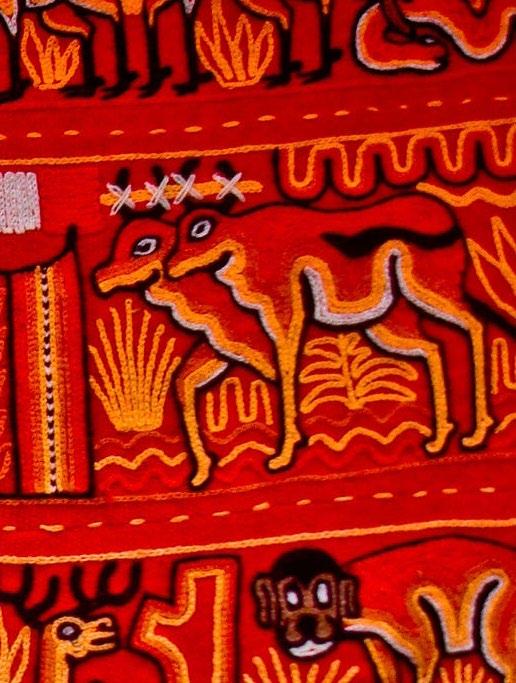

diversity and indigenous heritage, artists use color to celebrate their identity and heritage, reclaiming traditional techniques and motifs as a means of cultural resistance and empowerment. Whether through bold strokes of a paintbrush or intricate weavings of a loom, Peruvian artists infuse their work with the vibrancy and vitality of their country’s cultural heritage. Peruvian art is a celebration of color in all its forms – from the vibrant hues of the natural world to the bold
strokes of artistic expression. In every textile, painting, and ceramic piece, we see the diversity and resilience of a nation brought to life through the palette of its artists. As we immerse ourselves in the colors that defines Peruvian art, we discover not only the beauty of its creations but also the rich tapestry of culture, tradition, and history that inspires them and their designs.
In a rapidly changing world, Peruvian art serves as a powerful means of preserving cultural identity and heritage. Through traditional artistic practices such as weaving, pottery, and folk music, Peruvian artists connect with their ancestral roots and celebrate the rich tapestry of indigenous traditions that have shaped their country’s history. In doing so, they not only honor the past but also ensure that these cultural traditions continue to thrive and evolve in the present day.
Peruvian art has long served as a means of social commentary and political expression, providing a platform for artists to address pressing issues such as inequality, environmental degradation, and social justice. In recent years, street artists in cities like Lima have used murals and graffiti to raise awareness about these issues, sparking activism within their communities. Through their provocative works, these artists challenge the status quo and advocate for positive change.
While rooted in indigenous traditions, Peruvian art has also been shaped by centuries of cultural exchange and interaction with other cultures. From the colonial period to the present day, Peruvian artists
have drawn inspiration from a wide range of influences, incorporating elements of European, African, Asian, and indigenous cultures into their work. This cross-pollination of artistic styles and techniques has resulted in a rich and diverse artistic landscape that resonates with audiences around the world.
“Peruvian artwork goes hand in hand with the unique fashion still prevelant in today’s culture. Truly eye candy for anyone who witnesses it.”
In addition to its cultural significance, Peruvian art plays a vital role in promoting economic empowerment and sustainable development in local communities. Artisanal crafts such as weaving, pottery, and jewelry making provide income and employment opportunities for artisans in rural areas, helping to alleviate poverty and preserve traditional livelihoods. Moreover, the growing demand for Peruvian art and handicrafts in domestic and international markets has created opportunities for artists to showcase their work and contribute to the country’s cultural and economic growth.
Peruvian art is more than just a reflection of the past – it is a living testament to the creativity, resilience, and cultural richness of a nation. In modern times, Peruvian art continues to evolve and adapt, remaining relevant and impactful in an ever-changing world.

In the dynamic world of fashion, few designers possess the ability to transcend cultural boundaries and create garments that speak to people from diverse backgrounds. Harumi Momota, a visionary fashion designer known for her innovative designs and cross-cultural influences, is one such trailblazer. With her unique blend of Japanese aesthetics and Peruvian inspiration, Momota has captured the imagination of fashion enthusiasts around the world. Let’s delve into the world of Harumi Momota and discover how she is redefining Peruvian fashion.
Born in Japan but deeply inspired by the vibrant culture and traditions of Peru, Harumi Momota has masterfully blended elements of both worlds to create a unique and captivating aesthetic. Drawing inspiration from the rich textile heritage of Peru, Momota incorporates traditional Andean motifs, colors, and fabrics into her designs, infusing them with a modern Japanese sensibility. The result is a stunning fusion of cultures that celebrates the beauty and diversity of both Peru and Japan.
Central to Harumi Momota’s designs is a deep appreciation for Peru’s rich artisanal
heritage and textile traditions. Working closely with local artisans and craftsmen, Momota incorporates traditional Peruvian textiles, such as alpaca wool and Andean weavings, into her collections, ensuring that each garment is imbued with the skill, craftsmanship, and cultural significance of its origins. Through her collaborations with Peruvian artisans, Momota not only honors their centuries-old traditions but also provides a platform for their talents to be showcased on the global stage.
In addition to her creative endeavors, Harumi Momota is also deeply committed to sustainability and ethical fashion practices. Recognizing the environmental and social impact of the fashion industry, Momota strives to minimize her carbon footprint and promote fair labor practices in her production process. From sourcing eco-friendly materials to supporting local communities through fair trade initiatives, Momota’s commitment to sustainability is evident in every aspect of her work.


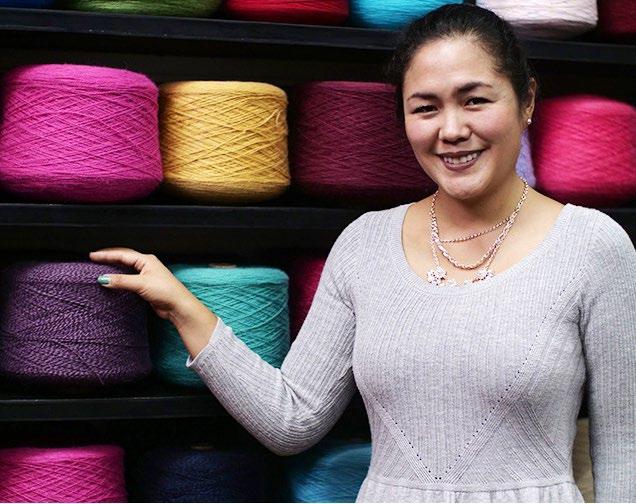
As a woman in the male-dominated fashion industry, Harumi Momota has faced her fair share of challenges. However, instead of allowing these obstacles to hold her back, Momota has used them as fuel to drive her forward. By breaking down barriers and defying expectations, Momota has paved the way for other women in the industry, showing them that with talent, determination, and resilience, anything is
is possible. One of the hallmarks of Harumi Momota’s designs is their inclusivity. Recognizing that beauty comes in all shapes, sizes, and colors, Momota creates garments that celebrate diversity and embrace the unique qualities of each individual. From sleek silhouettes to flowing fabrics, Momota’s designs are designed to flatter and empower women of all ages, backgrounds, and body types, allowing them to feel confident, comfortable and beautiful in their own skin.
Beyond the runway, Harumi Momota uses her platform to advocate for women’s rights and social justice issues. Through collaborations with organizations and charities that support women’s empowerment, Momota raises awareness about issues such as gender equality, reproductive rights, and domestic violence,
“Harumi Momota not only has created many luxurious designs but has helped empower many women of Peru to start their own businesses.”
using fashion as a powerful tool for social change. By amplifying the voices of women and shining a light on their struggles and triumphs, Momota hopes to inspire others to join the fight for a more equitable world. As a successful woman in the fashion industry, Harumi Momota understands the importance of mentorship and support in helping other women achieve their dreams.
Harumi Momota’s journey in Peruvian fashion is a testament to the power of creativity, cultural exchange, and collaboration. By blending elements of Japanese and Peruvian culture, Momota has created a unique and compelling aesthetic that speaks to people from all walks of life. Through her sustainable practices and commitment to ethical fashion, Momota not only creates beautiful garments but also fosters positive change in the fashion industry. As we look to the future of Peruvian fashion, one thing is certain – the influence of Harumi Momota will continue to shape and inspire the industry for years to come.
